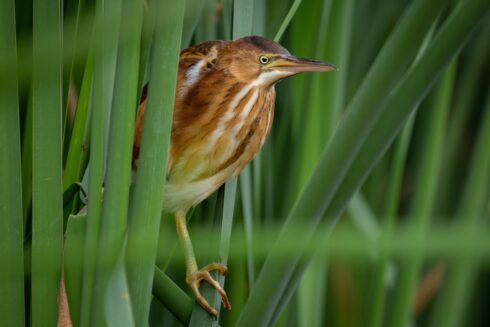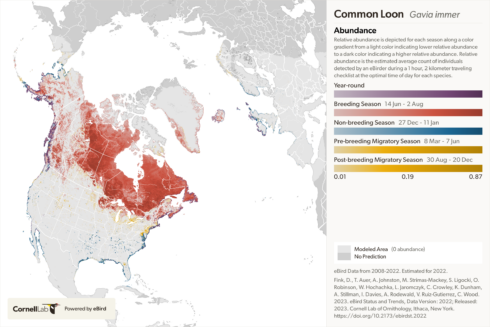eBird in Action: Integrating eBird Data for Cost-effective Conservation Solutions

Your eBirding data helps create tools that can be used to further conservation, inspire support, and inform ecological management strategies. eBird in Action is a segment which shares the conservation stories made possible because of your contributions.
Determining how many birds occur in a given area can be challenging, especially for species that lurk quietly in dense habitat, such as marsh birds or for species that occupy large expanses, such as raptors and waterbirds. For many birds, surveys needed to estimate abundance and population trends are often costly and labor intensive, leading many agencies to look for cost-effective solutions to help them manage wildlife.

Least Bittern © Anthony Glenesk / Macaulay Library
In place of these intensive wildlife monitoring programs conservation agencies are assessing if they can use participatory science data from the Cornell Lab of Ornithology’s eBird program. In the Great Lakes Region in Canada, scientists from Birds Canada compared results from intensive marsh birds surveys to Breeding Bird Survey data and eBird data. In another study focusing on Common Loons, in Washington State, scientists compared their monitoring data with eBird data to determine which dataset or a combination of both would produce the most accurate estimates of population size.
Both studies found compelling evidence that harnessing participatory science data in conjunction with other sources could be the key to robust conservation and management strategies. By using data from intensive survey programs, the Breeding Bird Survey, and eBird, Birds Canada scientists showed that the precision of the population trends improved for 11 of the 18 marsh bird species they examined. The combination of eBird observations plus those made by the Washington Department of Fish and Wildlife also played a crucial role in determining how many Common Loons occurred in the state. The findings revealed that eBird observations, in conjunction with agency data, contribute significantly to understanding the distribution of Common Loons.

Common Loon © Mike Melton / Macaulay Library
Bird observations made by participatory scientists can really make a difference in helping us understand abundance and distribution patterns that are an important part of creating effective conservation plans.
In a world where the health of our ecosystems hinges on accurate data, this research underscores the potential of integrated datasets as a promising avenue for safeguarding the future of bird populations.
Publications:
Bianchini, K., and D. C. Tozer (2023) “Using Breeding Bird Survey and eBird data to improve marsh bird monitoring abundance indices and trends.” Avian Conservation and Ecology 18(1). https://ace-eco.org/vol18/iss1/art4/
Sipe, H. A., I. N. Keren, and S. J. Converse (2023) “Integrating community science and agency-collected monitoring data to expand monitoring capacity at large spatial scales.” Ecosphere 14(6): e4585.



